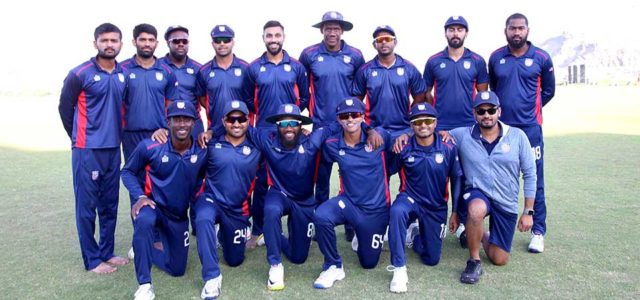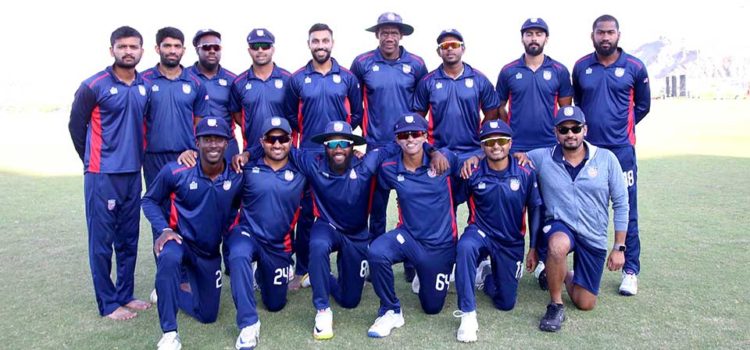

By Supriya Desai
Cricket, arguably is the second most popular sport in the world after soccer, but its spread is limited to mostly countries of the British commonwealth. In the U.S.A., with so many expats from cricket-playing countries living here, it is just a matter of time before the sport will catch on amongst the locals. By some estimates there are almost 20 million fans that follow the game here, however, to keep the millions of fans engaged and the momentum for growth going, some new strategies are needed.

There was great jubilation within the U.S. cricket fraternity when the U.S. Men’s cricket team got promoted to ICC Division 2 from Division 3. At this significant milestone, the U.S.A cricket board may continue fielding immigrant players in Division 2 as was done in Division 3. Some opinions voiced believe that such a strategy is detrimental to the growth of local talent. I believe at this time is a move in the right direction, especially with regard to keeping the existing fan base interested and motivated. The question to be asked is what will that do for attracting new players and fans within the U.S. At first glance it raises some doubt that it will be an impediment for local talent to progress, because of the higher bar imposed by highly skilled and experienced immigrant players and shutting them off from the leagues.
The reality is that home-grown players are not quite ready for the big-league, and until they get there, there is nothing wrong in using immigrant talent in the leagues. No doubt, it must be a mix of both for the long-term goals. The exposure to the immigrant = professional players, and the sheer experience of playing with them, will without doubt raise the skill level and competitiveness of the home-grown players. Even established professional leagues like IPL in India has a mix of local and overseas players and that has resulted in fantastic new talent emerging from non-traditional geographical areas like semi-urban towns.
The fact that the men’s team got promoted to Division 2 after employing this strategy in Division 3, shows that it is an effective one and continuing, it would be an important step in the U.S. march towards qualification for ODI status.
But this is a short-term strategy. A second strategy that has greater long-term benefits is also needed.
The long-term strategy should be to start kids aged 7 or 8 and put them through structured training programs. So, by the time they are 15 years of age, they are expected to have the right training, experience and attitude to play competitive cricket and can try out at Under-17 cricket Combines. With continued perseverance and uninterrupted training and commitment for five more years, they will be equipped to go to the Combines for Team USA try-outs.
To achieve this, we would need to start at the grass roots level. Every major city or township that has some cricketing activity should lobby with local governments and their Boards of Education to make cricket a part of the sports curriculum in schools like any other sport, with credits being given for college applications. This is indeed a herculean task, but can be achieved, not overnight but in the next 5 to 10 years.
The immigrant players have a huge advantage because of their training in national cricket academies for several years, and experience playing at the U-17 and U-19 levels, and in other leagues overseas. These advantages can be leveraged by making them mentor the home-grown players to have them improve. It is only when both are playing on the same teams that such synergy will be effective.
There are similar efforts made by cricket academies and cricket promoters in Houston, Dallas, Raleigh, St. Louis, Florida, Philly, NY, Maryland, Austin, California, and many other Cities and States, but it would require these major cricket promoters and academies to come together and establish the proper infrastructure.
A national seminar on cricket with internationally renowned cricketers and coaches as speakers, along with interactive sessions from representatives of different cricket academies and promoters on the same platform and under one roof, would be a great way to start such an initiative. The interactive sessions should result in a consensus to have a 5 to 7-year basic curriculum for pre-teens and teens, and which can be on par with similar national cricket academies from South Asian countries. At that time, we will see this amazing sport take off to the next level. Until then looking for home-grown talent would be like looking for a needle in a haystack.
The other big challenge home-grown players face is the high focus of their parents on academics and other activities. For the most part they can only commit to a few weekend hours for coaching and practice. That is clearly not enough. A multi-week summer boot camp can fill this gap to some extent.
The immigrant players have their challenges too, as most are working professionals in a highly competitive workforce, and need to balance their work, family and cricket. Their sacrifices, work-ethic and commitments must be appreciated.
Of course, the biggest challenge of all is to get funding for all such efforts, which is almost a catch-22 situation. It is hard to raise money if the interest level is low, and without money it is very difficult to raise the interest level. But as we have seen these kinds of challenges have worked themselves out, and I am sure enough awareness and interest can be generated to find sponsors for such initiatives.
In conclusion, I would say the proposed selection of immigrant players in the upcoming ICC Division 2 by the USA cricket board is a well thought out policy and has more benefits than drawbacks. Adding the long-term second strategy I described will lead to the sustained growth of the sport in the U.S.
Supriya Desai is a Professional Dance Trainer and Coach, and Cricket Enthusiast



